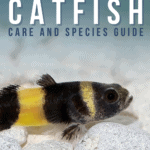Ornamental catfish are popular options for freshwater aquariums, and one of the most stunning examples is the brilliant black-and-yellow Bumblebee Catfish. These shy little bottom dwellers do well in planted communities and are easy to care for, so check out our complete guide to see if the Bumblebee is a good fit for your tank!
Quick Facts About Bumblebee Catfish
What Are Bumblebee Catfish?
There are several species sold in the aquarium trade under the term “bumblebee catfish,” but the South American Bumblebee Catfish (Microglanis iheringi) is the smallest and most friendly of the bunch. These shy fish are ideal for tanks 20 gallons and up, so let’s take a detailed look at their natural history and care requirements!
Natural History And Habitat
Of the three bumblebee species typically seen in the US aquatic trade, the smallest is the South American Bumblebee Catfish (SABC). They are frequently captured as juveniles from the swift rivers and streams along the Turmero River Basin in Venezuela, although their range also extends into Columbia and Northern Brazil:
- These scavenging bottom dwellers are omnivorous and readily consume both plants and other animals, including insects and immature fish fry.
- They are shy and mostly nocturnal (active at night).
- They spend the daylight hours hiding in the substrate or amid the rocks and driftwood along the bottom of the waterways.
Bumblebee catfish were first described in the 1800s, and since that time more than 50 species have been identified in the northern parts of South America. Other similar but unrelated “bumblebee” fish are found in Africa and parts of Asia too. These larger predatory species have dramatically different requirements from the SABC.
Appearance And Size
Bumblebee catfish are named for their beautiful markings since these fish have a dark brown to black head with alternating, irregular patches of yellow and brown/black running across their bodies and tail. They vary from a bright golden yellow to a brownish-orange hue, and these markings act as camouflage in the wild.
How big do bumblebee catfish get? It depends, since the Asian and Giant varieties can reach more than twice the size of the peaceful South American species. SABCs are small catfish that average about 3-inches in length at maturity and rarely exceeds 3.5 inches from snout to tail:
- They have the typical catfish appearance with a wide, prominent mouth surrounded by sensitive barbels, a flat abdomen, well developed pectoral and dorsal spines, and a slightly forked caudal fin (tail).
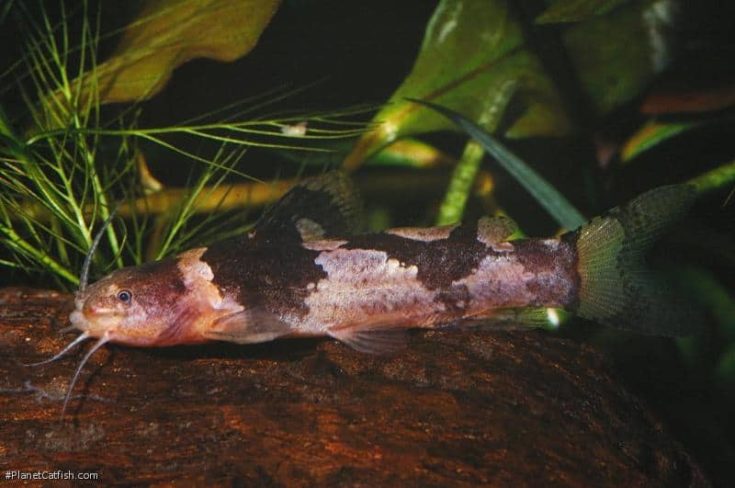
- They use their widely-spread ventral fins like hands to maneuver along the bottom of the tank and for digging in the substrate.
- Juvenile SABCs can be distinguished from the two other species by the brown/black square-shaped patch on their caudal peduncle (base of tail).
- The Asian (Pseudomystus siamensis) and Giant Bumblebee Catfish (Pseudopimelodus bufonius) can reach 6 and 10-inches respectively, but these predatory fish don’t work as well as the SABCs in peaceful communities.
Lifespan
With proper care, the average lifespan for bumblebee catfish is around 5 years. These fish are rarely if ever bred in captivity, and are usually collected from wild populations as juveniles before being sold into the aquarium trade.
Behavior And Temperament
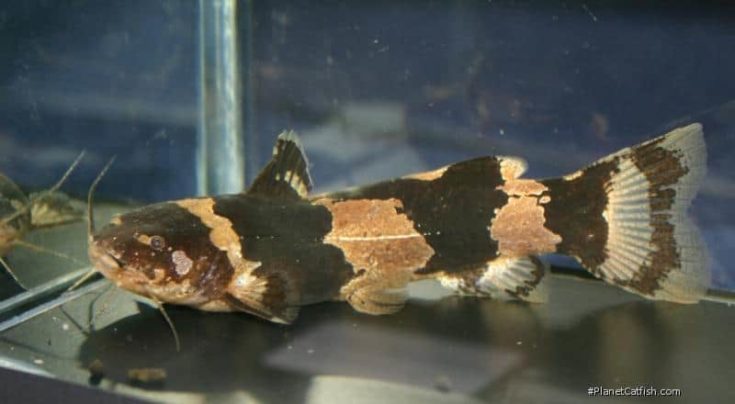
The SABC is a shy bottom dweller that generally does well with other similar-sized peaceful community fish. SABC are not predatory and don’t usually attack other fish, unlike the larger and aggressive Asian and Giant varieties. But they are catfish and will eat anything (including other fish) that fit inside their wide mouths.
They are naturally nocturnal and most active when your aquarium lights are off. During the day they prefer to hide in the substrate and under decor, though they may explore shaded areas of your tank looking for food. You can even train your SABCs to come out for treats in the daytime!
You can keep a solo SABC in your community tank, but these fish also get along with each other long as they have enough room to scavenge in different areas. While I’ve heard reports of aggressive bumblebees feasting on their tank mates, these fish are usually Asian or Giant species sold incorrectly as SABCs.
How To Care For Your Bumblebee Catfish
The good news is that SABCs are generally hardy, undemanding, and easy to care for as long as a few key requirements are met. Whether you’re setting up a new tank or adding them to your existing community, here’s the details on what you’ll need to keep your catfish happy and healthy!
Tank Set-up And Habitat Requirements
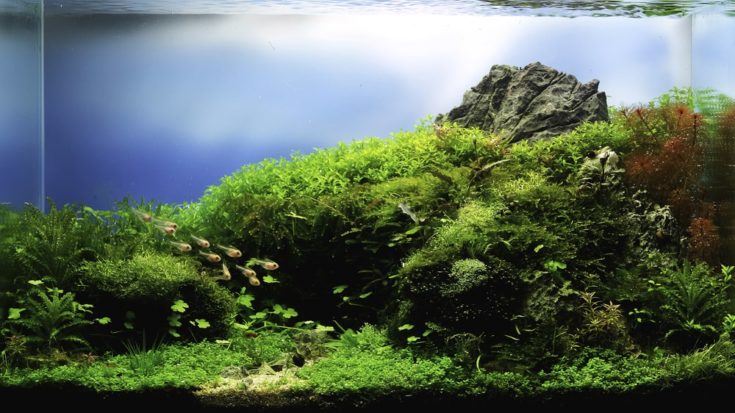
What kind of fish tank set-up is ideal for these small catfish? I prefer to go with a design that mimics their natural environment, but these fish are pretty flexible overall when it comes to your equipment and decor. Let’s take a look at the habitat and water preferences of SABCs:
Aquarium Size
You’ll need a minimum of 20 gallons tank for a single catfish, and it’s usually a good idea to allow about 10 extra gallons of space per SABC. Since they are bottom dwellers, SABCs prefer longer tanks over the tall or portrait-style aquariums. A 55-gallon tank is the ideal size for a group of three SABCs in a mixed community.
Substrate
SABCs spend most of their time hiding in and scavenging through your substrate, so it’s best to choose natural soils, sands, or fine gravels without any rough or jagged edges. Softer substrates are less likely to cause an injury to your fish than the harsher, artificially colored aquarium gravel products.
Water And Temperature Parameters
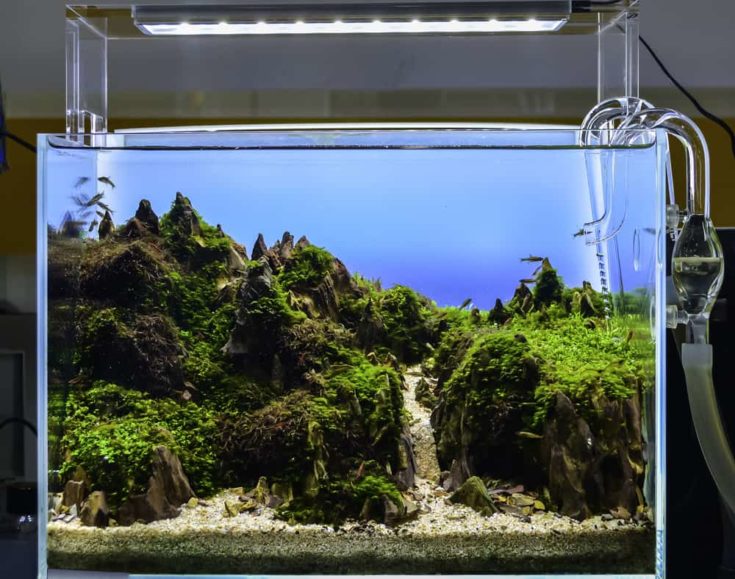
Bumblebee catfish tolerate water temperatures from 70 to 77°F. Like most aquarium species, SABCs don’t like it when things shift rapidly, so using a heater to maintain a consistent temperature is the way to go. They prefer soft water with a pH of 6.5 to 7.5 and around 8 to 12 degrees of general hardness.
Filtration, Aeration And Lighting
Catfish need very clean and well-oxygenated water to thrive, so having a robust filtration system is ideal, although they’re not picky about the type of filter you choose. It’s best to ensure proper oxygenation by using an air stone and pump along with your filter to prevent the development of hypoxic “dead zones” in your tank.
SABCs prefer dim lighting and actively avoid areas of your tank that are brightly lit. If you’d like your catfish to be active during the day you’ll have to train them with food, and provide areas shaded heavily by plants or decor. Adding a moonlight is a great way to observe their natural behavior at night!
Plants And Decorations
You have a lot of options when it comes to decorating your catfish tank, but the key to having happy SABCs is to provide plenty of rocks or driftwood to hide among. Catfish get very stressed if they can’t hide and sleep safely during the day. You can also use live or plastic plants or other decors to create shaded areas in your tank.
Maintenance
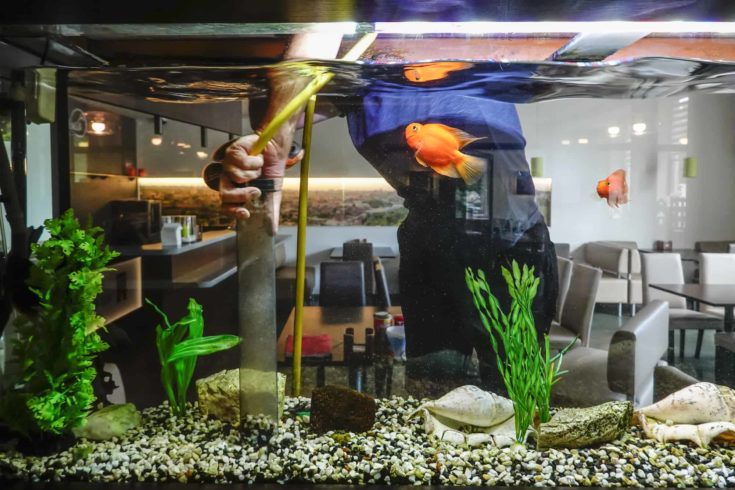
Catfish are sensitive to ammonia and other aquarium waste products, so it’s important that you perform regular water changes to prevent a build-up of these toxins in your tank. In addition, you’ll want to keep your filtration system clean and replace the filter media on schedule to keep the water sparkling fresh.
Feeding
SABC are omnivores and need a diet balanced between plant foods and protein. As scavengers, they’ll happily feast on the food scraps leftover from the rest of the community, but they’re also shy eaters. They may come out for special treats like live brine shrimp (a big favorite) but they prefer to scavenge under the cover of darkness.
Be sure to take your other community diets into account when feeding your catfish, and try to supplement with the appropriate treats. For instance, if you’re feeding your community a high-protein flake food, offer your SABCs a mixed diet of sinking algae wafers and spirulina pellets, with fresh blanched veggie treats.
Obesity can be a problem with the eating machines, so while you can use high-value treats like brine shrimp, bloodworms, Daphnia or shrimp eggs to train your catfish to come out in shaded areas during the day, don’t feed them too often! It’s best to feed them once a night and offer live treats no more than a few times a week.
Tank Mates
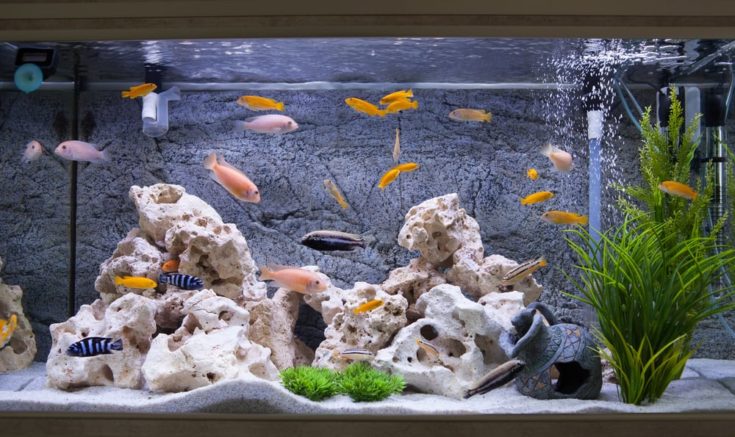
The best tank mates for bumblebee catfish are usually similar-sized, peaceful community fish. Avoid keeping SABCs with semi-aggressive and aggressive species like Tiger Barbs, Oscars or the Asian or Giant bumblebees. You have a wide range of options here, but some of the best tank mates include:
- Bottom dwellers like Corydoras species and loaches
- Algae eaters like the bristlenose plecostomus
- Peaceful freshwater sharks like the rainbow shark
- Rainbowfish
- Dwarf gouramis
- Livebearers such as mollies, platys, and swordtails
While SABCs are not predatory catfish, they are opportunistic feeders and eat anything that fits inside their mouths. You should avoid keeping them with smaller fish like neon tetras or invertebrates such as shrimp and snails. If your catfish starts attacking your community, it’s probably not an SABC and was mislabeled in the store.
Breeding
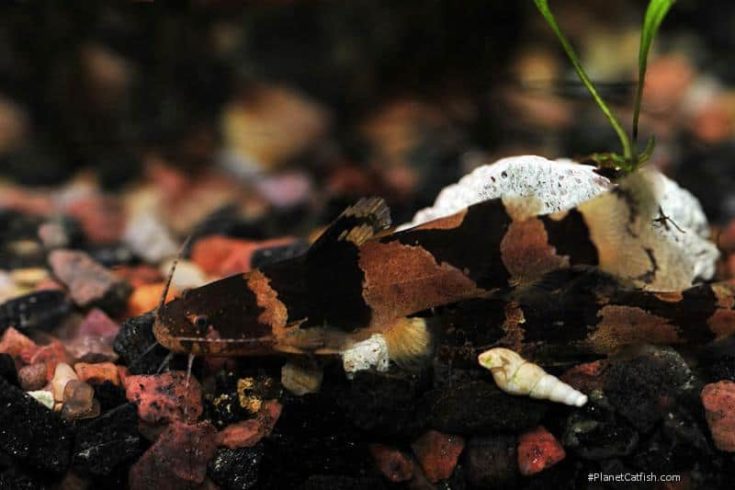
It’s very difficult to breed SABCs in captivity. In fact, I’ve never seen a documented case of captive-bred bumblebee catfish for sale anywhere in the US. Feeding a protein-rich diet followed by a rise in water temperature may induce your fish to spawn if you have a mixed-gender tank, but it’s unlikely to happen in the typical home aquarium.
Health Concerns
Like all aquatic species, catfish are susceptible to waterborne bacteria, viral and fungal infections, especially if they’re under extreme or prolonged stress. But SABCs are not prone to many specific health problems or diseases. If you keep their water temperature and other parameters consistent, feed them a balanced and varied diet and avoid overfeeding them, chances are good you’ll have your catfish for years.
Setting Up A Bumblebee Catfish Tank: Equipment And Supply List
For a tank appropriate for a community with 1 of these beautiful and shy catfish, you’ll need:
- 20 long to 30-gallon breeder tank (or larger) and cover/lid.
- Filtration system and air stone/pump.
- Aquarium heater.
- Soft aquatic soil, sand, or fine gravel substrate.
- Decor such as large and small rocks, driftwood, branches and live or plastic plants.
- A bottle of water conditioner.
To feed your catfish, you’ll need:
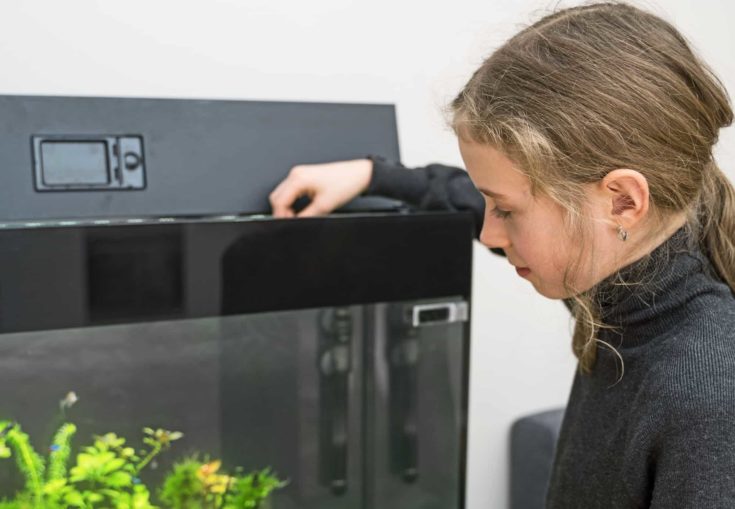
- Commercial sinking algae wafers and spirulina pellets.
- Freshly blanched veggies like peas, cucumbers, zucchini and spinach.
- Live/frozen/dried treat foods like brine shrimp, bloodworms or Daphnia eggs.
Optional equipment includes:
- Moonlight or blue strip light for nighttime viewing.
Conclusion
The SABC is a beautiful and fun little catfish, especially if you watch them under a moonlight! What do you think about the Bumblebee catfish, and does it sound like a good option for your next aquarium? We’d love to hear your opinions, so drop a comment below or join us on social media!
